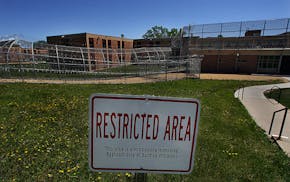ROCHESTER - A coffee talk on the East Coast almost two decades ago forever changed Rochester.
Two local businessmen tagged along with Mayo Clinic officials to a Washington, D.C., medical conference in 2008 when they thought to bug a Mayo exec with an idea about working with the city to improve patients' stays outside the hospital.
"The patient spent 70% of their time on, as we used to say, our side of the street in the nonclinical setting," said John Wade, one of the two businessmen. "How could we enhance experiences so people could have a similar level of care whether they were in the clinical practice or the community?"
Those questions helped launch an unprecedented economic development project — Destination Medical Center, the $585 million initiative to turn Rochester into an international medical hub over a 20-year period.
Halfway through its lifecycle, DMC — paid for with city, county and state funding — is on track to meet its objective to bring in $5.6 billion in private investment downtown.
Proponents and DMC officials hail the initiative as a revolutionary partnership that's helping Rochester grow faster than almost all of Minnesota and bringing in new industry.
"Rochester's gone from a big small town to a small big city," said Patrick Seeb, DMC's executive director.
With its overall goals arguably met thanks to a $5 billion Mayo clinic expansion downtown, DMC officials are reviewing their accomplishments and looking at future goals.
Yet Rochester residents have split over DMC's vision, some touting the growth it helped bring to downtown and others questioning if the project has actually benefited local businesses, beyond Mayo, the state's largest private employer.
For some, the initiative has inflated the cost to do business downtown, leaving some business owners concerned the initiative hasn't lived up to the lofty promises officials made at its start.
"The property owners that can weather that storm of investment, it's phenomenal," said Pasquale Presa, a local chef who invested heavily in putting a pizzeria into one of the swank new buildings. "But [for] the small businesses that are the extension of what people truly love about this town, it's a gamble."
A better place
Rochester has depended on Mayo Clinic for its growth for more than a century. It's one of the top 10 most anchor-dependent cities in the U.S., according to DMC officials — meaning Mayo dominates the local industry.
So together, Mayo and city officials approached lawmakers in fall 2012 with proposals.
"I didn't even know exactly where we were going with this except that conceptually we want our community to be a better place," said Rochester Mayor Kim Norton, then a DFL state representative who helped push the proposal during the 2013 legislative session.
DMC remains the largest project ever carried through the Legislature. It wasn't well received at first, in part because lawmakers wanted more financial commitment from the city and Olmsted County, which eventually added $128 million and $46.4 million respectively to the state's $410.6 million.
It officially launched in 2015 with funding secured through 2035.
Private investments took off in DMC's first few years as officials set to work on its early goals: Create new jobs in the area, boost the "Heart of the City" corridor directly east of Mayo's main campus buildings, and help diversify Rochester's economy.
Renderings spread showing how Rochester could change, adding more hotels and attractions that could spur future development.
Among DMC's early investments were One and Two Discovery Square, which have attracted companies like Boston Scientific and the medical software giant Epic to set up offices in Rochester. Mayo Clinic has pursued medical patents for decades but hadn't focused on commercializing the research, according to Seeb.
Housing units more than doubled since DMC's start from a little more than 1,100 in 2013 to 2,800 this year, thanks to infrastructure investments in several apartment complexes. The University of Minnesota Rochester campus began buying property for a proposed master campus slated to go in the southwest corner of downtown, though plans shifted to a more downtown-focused campus in recent years.
Critics emerged quickly, though, as commercial rents more than doubled soon after DMC launched and property values started to skyrocket, bringing tax hikes to business owners. Construction downtown also became commonplace.
Some were concerned too many older buildings were being demolished to make way for new developments, destroying Rochester's character.
"There was fear among people who owned those older buildings or who loved the history of Rochester, who were so afraid that DMC was going to obliterate all those beautiful old buildings," Norton said. She ran for mayor in 2018 in part, she said, because she wanted to serve on DMC's board and help communicate what actions the initiative took to residents.
Surviving COVID
Everything came to a head with COVID, however. DMC had anticipated some slowdown in investment in 2020 as some projects started several years before began to wrap up, but the pandemic that shut down communities worldwide hit at a disastrous time for downtown business owners.
Non-Mayo private investment in Rochester tanked in the years following COVID, hitting a low of $9 million last year. Yet Mayo doubled down on Rochester in 2023 with its expansion announcement, starting construction this spring on five new buildings, including a nine-story patient care complex.
That's a mixed blessing, according to downtown business owners.
Presa, who opened Pasquale's Neighborhood Pizzeria in 2016, in the new 501 on First apartment complex, and doubled his space the following year, weathered COVID mainly by adding a wholesale line of Italian-imported products. More recently, he said sales have remained flat as thousands of office workers remain at home.
With another round of disruptions in full swing as a result of Mayo's "Bold Forward" project, Presa said he has already had to cut down on hours for some workers and is thinking about scaling back his space.
"I love and support the growth of what's happening. It just totally affects the way people go to spend their money," Presa said.
Like Presa, downtown restaurateur Sammi Loo said she doesn't blame Mayo for the construction. Loo, the owner of two downtown businesses, Mezza9 Café and Bebap Korean Eats, views the hospital's expansion as a mostly positive development for the future of downtown.
She worries, however, that the benefits won't be shared evenly. Deep-pocketed property owners may be able to weather construction for the next five years, but for businesses like hers that depend on month-to-month sales, the situation is bleaker, she said.
Loo, who opened the café in 2022 and then doubled down on downtown with the restaurant and upstairs cocktail lounge, has tried lowering her lunch specials from $20 to $15 and adding a daily happy hour. Still, she said, the math isn't adding up.
"Right now, I would not recommend anyone do business down here," Loo said. "And that's sad to say because I love downtown."
Bucky Beeman, a commercial real estate agent who has investments in three properties downtown, said there is a shared feeling among businesses in the area that they are going to need to buckle in for the next few years as construction gets into full gear. That's created some hesitation for new businesses downtown, he said, but he sees others thinking outside the box.
"I'm seeing [downtown] come back, but it's not coming back as a tidal wave," Beeman said. "It's coming back as a trickle. It falls on the property owners to get creative and willing to contribute to the cause to try to fill up their floors."
'The true legacies of DMC'
Seeb and early DMC boosters acknowledge there was confusion early on over how DMC could benefit downtown. Seeb said he'd like to see better communication in the future over how DMC projects benefit downtown, while early proponents like Wade say in hindsight they would have tempered expectations about how fast Rochester could grow.
Still, DMC advocates have plenty of accomplishments to tout.
Mayo's medical focus helped bulletproof Rochester from COVID's economic ravages, making Minnesota's third-largest city the first metropolitan area to recover job losses and employment rates from the pandemic.
Rochester's job growth is outpacing similar-sized cities from Fargo and Sioux Falls to Des Moines; Seeb said the growth rate is on track for DMC's 20-year target.
At least 15 downtown blocks have been redeveloped five minutes from Mayo Clinic, which also includes far more housing than city officials had initially planned.
DMC hasn't just affected downtown, boosters argue. City commercial licensing and permitting were at record highs in 2023 and 2024. Gov. Tim Walz points to DMC and Mayo as the catalyst behind Minnesota's growing Medical Alley of biotech and medtech industries.
"We've got something here that's very unique and very hard to replicate elsewhere," Walz said during a stop in Rochester last month, pointing out projects like the Phillips plant expansion in Plymouth as examples of growing interest in Minnesota's medical capabilities
Other communities like St. Cloud and Duluth are looking for their own versions of DMC, putting together proposals for downtown economic districts paid for with significant state funding. Rochester leaders say it was difficult to build the DMC initiative from scratch, but it can be done with the right private partner.
It's unclear what efforts DMC will focus on in the future. Rochester has plans to create a waterfront district by the Zumbro River in the east part of downtown, as well as more housing southeast of the downtown area; both projects have garnered DMC funds for nearby bridges and infrastructure touch-ups.
DMC officials plan to announce the five-year plan and future goals later this year. The one thing they have said publicly is they plan to build on the efforts it took to streamline commercial and residential work in the city over the last decade.
"One of the true legacies of DMC will be the capacity that has been created in this community that will outlast the 20-year initiative," Seeb said.
While the next few years will bring new challenges for downtown businesses, Beeman is hopeful that those that are able to navigate through them will come out in a better position because of Mayo and DMC's investments.
"When you have an organization spending billions, bringing more jobs, more visitors, becoming a world destination beyond what they've already become, I'm still an optimist," Beeman said. "Now, due to the circumstances of COVID, construction, and how long it takes to make a billion-dollar investment, is it going to be a bumpy ride? 110%."
Sign up for the Minnesota Star Tribune's Rochester Now newsletter, covering the latest Rochester news, delivered each weekday.
Man admits to fatally choking girlfriend in her downtown St. Paul home

The Minnesota Legislature passed a big cannabis bill. Here's what's in it.

What did — and didn't — get done at the Minnesota Capitol this session

2 escapees from St. Peter sex offender facility were living in unlocked area, state says

